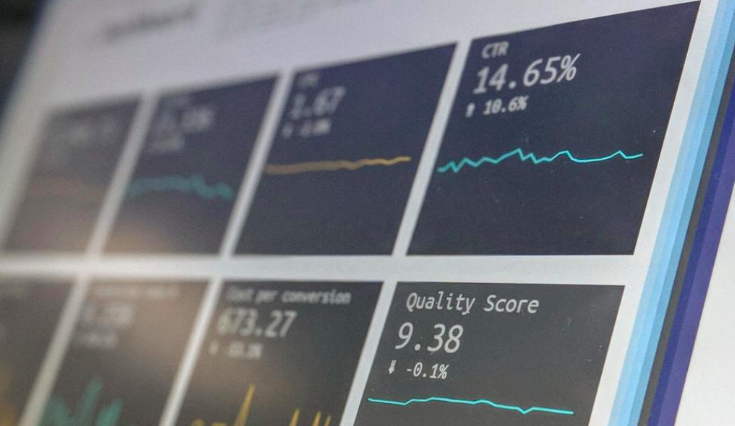2019 Predictions: Customer Experience Measurement, Touchpoints Everywhere, Privacy First
— January 11, 2019
The new year is upon us, and I like to use this time to pause, look at the larger picture, and explore themes and ideas that will dominate the year to come.
At Apptentive, working with many of the world’s largest and most customer-focused companies gives us deep insight into the goals they want to accomplish and the legacies they want to build. While playing in this dynamic field, I like to test my ability to read the tea leaves and also have some fun in the process!
Before moving on to predictions for 2019, let’s look at my 2018 predictions for mobile and how they fared.
2018 Predictions and Results
Prediction #1: Blockchain as it pertains to identity
Prediction Grade: B
I predicted that we’ll hear a lot more about companies offering identity solutions through the use of blockchain technology. In addition to the hype in this sector, it seemed like some of the underpinning identity technology infrastructure for the next 10 years was being built out.
In 2018, several companies stepped into the arena with identity management solutions – from startups like Evernym, OneKosmos, Sovrin, Uport and Attest to behemoths like IBM. However, while I think there’s a lot of interesting foundational work happening, I don’t think the buzz on these companies has really risen to a loud roar as of yet, so I’ll give myself a B on this one.
Prediction #2: Augmented reality (AR) instead of virtual reality (VR)
Prediction Grade: C
Given the lower cost of adoption for AR experiences, I anticipated pundits claiming that “AR has killed VR” and seeing commercial applications of AR in shopping among other outlandish experiments.
In 2018, pundits certainly did talk about the AR wave and the more interesting and varied experiments that were happening. There were also really interesting shopping experiments with AR, from Shopify to Lowe’s to Zara. However, VR didn’t really “go away”—price drops for the Oculus line of products, continued investment from HTC, Valve, and Microsoft and the release of the Magic Leap SDK gave more legs to the VR side of the industry. I think that AR investment and use cases are seriously outpacing the VR scenarios, but I’ll give myself a C for this one, because VR certainly isn’t dead.
Prediction #3: The return of “customer experience”
Prediction Grade: A
I expected the emphasis on this area of opportunity would result in strong and long-lasting cultural shifts inside some committed companies, and a meaningful amount of thrashing at those chasing the latest trends. Amazon’s sustained success made leaders recalibrate their strategies to put the customer at the center of their universe.
I’ve laid out what shape this will take in 2019 below, but the emergence of SurveyMonkey as a public company, Qualtrics being acquired by SAP, and an acceleration of online competition, companies are talking about customer experience more than ever before. I found it gratifying that every conference I attended this year had at least one panel on “Customer Experience” if not several. I give myself an A for this one!
Prediction #4: Global Data Privacy Regulation (GDPR) as discussion-driver
Prediction Grade: A
As expected, GDPR went into effect in May 2018. As companies took time to understand how to comply with the new ruling, I predicted it would drive a mounting set of conversations about privacy and data storage that needed to happen at an international level.
In 2018, consumers discovered the many non-transparent ways that their data was being used, one of the most shocking being Cambridge Analytica’s abuse of Facebook user data during the 2016 election campaign. In 2019, this will continue to drive conversation and action as legislation tightens. I’ve elaborated on this below but this was a bit of a layup prediction that I get an A for :).
2019 Predictions
Now, let’s look ahead through 2019. Here are my predictions based on a broader approach that includes but is not limited to mobile.
Prediction #1: Customer experience measurement and management matures

Since the early 2000s, NPS (Net Promoter Score) has grown in popularity and been increasingly adopted by organizations of all sizes to become a standard of sorts when measuring customer experience. However, NPS was devised as a metric to understand and measure customers in a way that led to growth and favored “good” profit (earned with customers’ enthusiastic cooperation) over “bad” profit (earned at the expense of customers, draining the value out of customer relationships). As a result, organizations of all sizes are adhering to a measurement that is useful, but not complete.
Simultaneously, many organizations have adopted point measurements of CSAT (Customer Satisfaction)—working to understand satisfaction through the lens of predicting customer retention and identifying pain points and areas of friction. You don’t need to look further than your email inbox a week after Christmas to start seeing the wave of requests to answer a CSAT survey or phone calls to follow-up after large ticket items. The result? An often confusing landscape of practices and metrics internally at large organizations, in particular, where the nomenclature is confusing and the benchmarks are challenging to agree upon, much less act upon.
In 2018, with the landmark events of SurveyMonkey going public, Qualtrics being acquired by SAP for $ 8 billion, and Verint adding Foresee to its VoC (Voice of the Customer) portfolio, customer experience and feedback has thrust itself into the mainstream business consciousness. In 2019, executives will attempt to consolidate the various “customer experience” related practices and measurements in order to drive more consistency. The desire to simplify and align the organization around customer-centric behaviors, combined with the knowledge that tools and practices exist for the entire organization will lead CEOs, CMOs, and CXOs to search for the next level of maturity.
Prediction #2: Digital customer touchpoints everywhere

The blending of the physical and digital worlds continues unabated. A company might primarily be known for its physical presences, but increasingly digital channels are outpacing the growth of the physical. And those who can’t keep up are being left in the dust. Over 3,800 retail stores announced they were closing in 2018. The list includes brands like Gap, Walgreens, and Toys R Us (which closed all 735+ US stores after filing for bankruptcy). With other closures already in progress, Sears Holdings just announced they will close 80 more Sears and Kmart stores by March 2019. The analytics investments of the past two decades have enabled measurement and led to a marked increase in the insight into consumer behavior on digital channels.
Now, companies invest more heavily in digitizing the physical experience, whether it’s through the connection of the physical (e.g. gas station pumps connected to the Internet) or the introduction of digital first experience in the physical locations (e.g. order kiosks at McDonald’s, check-in kiosks at airports and hotels, in-room checkout, etc.). Companies are building customer experiences that blur the lines between in-store and online. Nike entered this “brick-and-mobile” movement with two tech-infused stores where customers tap their phones to trigger a variety of in-store experiences.
This leads to, in conjunction with prediction #1, a newfound importance and opportunity for the leaders of physical storefront operations. Each physical location has the opportunity to dazzle customers. The new customer journey can be understood through investments in digitizing more of the physical experience, and while the excitement and hype around Bluetooth beacons has diminished to some extent, those investments are starting to coalesce in a broader strategy of connecting and lighting up touchpoints everywhere. In 2019, we’ll see a deepening of these investments by market leaders.
Prediction #3: Aggressive investment in customer-centricity by the leaders and disruptors while others are fearful

In 2019, uncertainty around the capital markets and performance of an economy that has been in a bull market for basically a decade will result in a massive opportunity for customer-centric companies who have an investment strategy that matches their belief in the future. Bold leaders, like Amazon, will continue to push their advantages in every area, investing more as the economy tightens. Disruptors will see an opportunity for continued investment in their customer-centric beliefs, putting more dollars behind delivering great experiences (see T-Mobile’s “Team of Experts”), while fearful companies will wring their hands and proclaim adherence to capital efficiency and conservative spending.
The effects of this won’t really show until 2021/2022, but 2019 will present companies with a litmus test about the extent to which they are paying lip service to customer-centricity versus grabbing on to the theme of the day. In 2019, true innovators will see a benefit in increasing their investment in customer-centric activities, measurement, and cultural adherence, while fearful companies will hide behind the scary, macroeconomic conditions and seal their fates well before it becomes obvious.
Prediction #4: Privacy first legislation explodes

2018 was a watershed year when it comes to concerns about consumer privacy. Between GDPR and the almost daily emerging stories about the ways in which Facebook, YouTube, Twitter, and other social platforms are being abused by political and criminal actors, the average person now has a much greater understanding that their data is being used constantly and not necessarily with their permission. Even data that is claimed to be anonymous may not be as such, and that is raising a red flag for consumers.
While GDPR is a flawed device, it won’t stop legislators around the globe from running towards instituting their own similar restrictive laws. Companies built with a privacy-first/permission-based mindset will be in a much better situation than companies oriented around selling consumer data in a third-party manner. Axciom’s purchase by IPG in 2018 was a mutually beneficial deal as IPG needed the power of first-party data to thrive in a privacy-first world, and Axciom needed the clout of a big company to brave the inevitable rocky times that many data owning companies are bound to go through over the next few years. Google rolled out amended terms and conditions for AdWords in mid-2017 and put the onus on brands and publishers to ensure they have consent for the data they are using to target consumers.
Share your thoughts
Thanks for reading my predictions for what will have a meaningful impact in 2019. Laser sharp focus on customer experience will continue to drive innovation in every industry. Conversely, the big Cableopoly will start to erode making way for players who put the customer at the center of every decision. It’s going to be an exciting year for change, and bold companies that focus on customer centricity will come out on top.
What are your predictions? Anything you disagree on? I’d love to discuss your thoughts in the comments below.
Business & Finance Articles on Business 2 Community
(19)


